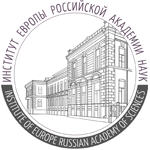THE HISTORY OF THE INSTITUTE OF EUROPE
 |
 |
The Institute of Europe is located in one of the historic quarters of the Russian capital. Here, since the mid-XVII century, buildings of the Moscow University were erected around its main edifice on Mokhovaya street. Constructed in 1837, the one-story red brick building was designated for the chemical laboratory of the University. This laboratory justifiably was considered to be one of the best in Europe. The laboratory carried out research by assignments of the Artillery Department, the Ministry of the Interior and by order of Moscow manufacturers. The next phase in the building’s history is associated with Professor V.V. Markovnikov, the founder of the national school of chemists, who became head of the chemical laboratory in1872. Markovnikov’s laboratory was one of the first to open its doors to women-scientists. Yu.V. Lermontova, the first Russian woman-chemist, niece of the great poet, a student of D.I. Mendeleev and A.M. Butlerov and a friend of Sofya Kovalevskaya at Heidelberg University, worked here on the methods of deep processing of oil. The research carried out by Yu. Lermontova contributed to the emergence of the first oil and gas plants in Russia.
In 1893, the laboratory was headed by N.D.Zelinsky, an eminent Russian and Soviet organic chemist, who during WWI N.Zelinski became famous for his invention of the gas mask. Activated charcoal became his other widely-known achievement. The method of producing gasoline developed by N.Zelinsky in the 1930s made an enormous contribution to the development of Soviet industry. These days the north wing of the building houses the museum-apartment of N.Zelinsky. The laboratory stayed fully operational during WWII as well. Numerous studies for defense establishments were added to traditional classes with students. After 1954, when the chemical laboratory moved to the new building of the Moscow University on Lenin (Vorobyev) Hills, the "red building" on Mokhovaya continued to serve national science and higher education. The Institute of Europe of RAS moved into this building in the early 1990s.

